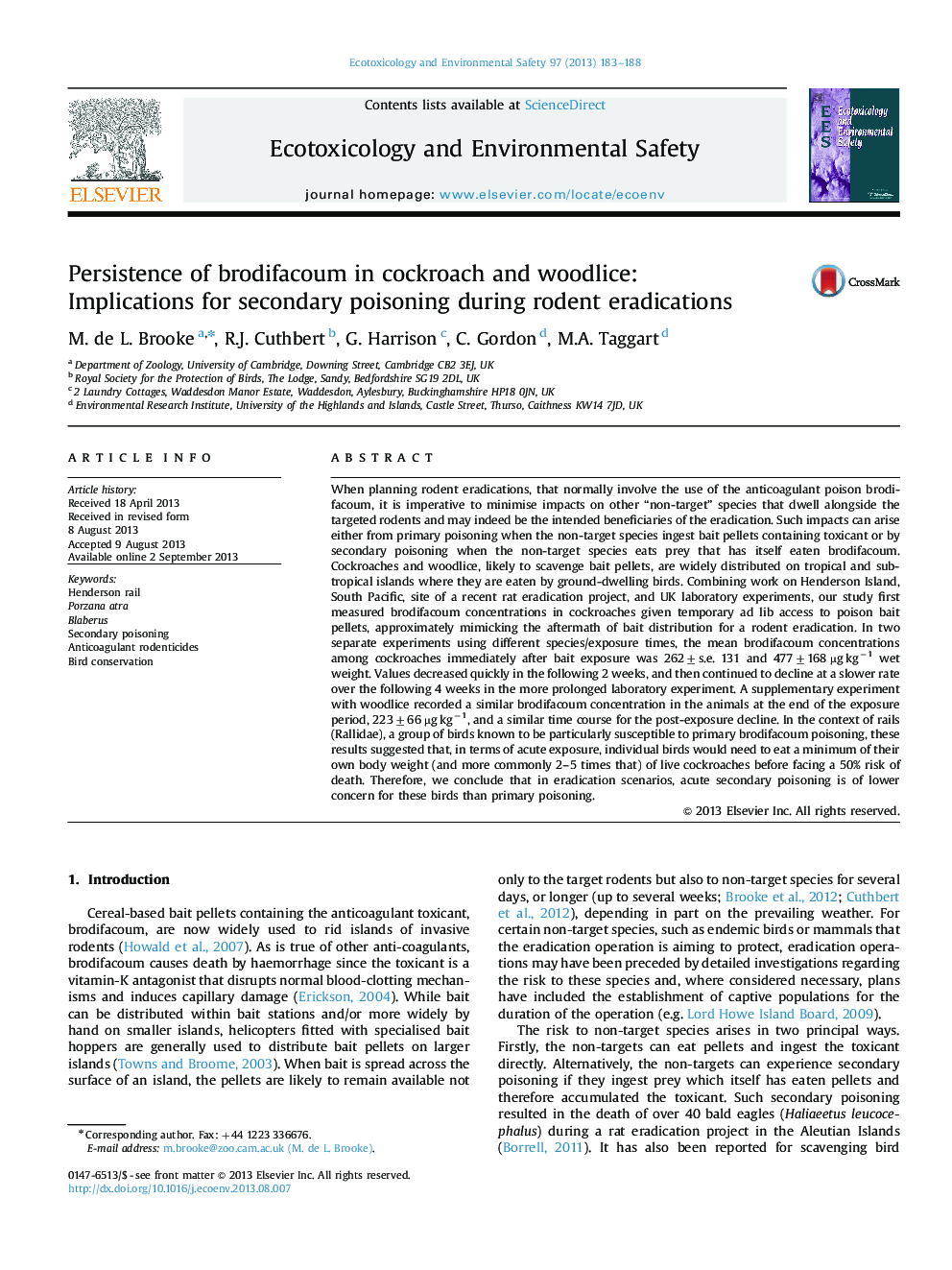| کد مقاله | کد نشریه | سال انتشار | مقاله انگلیسی | نسخه تمام متن |
|---|---|---|---|---|
| 4420317 | 1618966 | 2013 | 6 صفحه PDF | دانلود رایگان |

• Secondary poisoning of non-target species is a risk during rodent eradications on islands.
• It might happen if birds eat invertebrates that have consumed the commonly-used toxicant, brodifacoum.
• We assessed the risk by feeding cockroaches and woodlice with poison pellets.
• We measured the brodifacoum level reached in and the rate of disappearance from the invertebrates' tissue.
• Both measures suggest that secondary poisoning of insectivorous birds is not very likely.
When planning rodent eradications, that normally involve the use of the anticoagulant poison brodifacoum, it is imperative to minimise impacts on other “non-target” species that dwell alongside the targeted rodents and may indeed be the intended beneficiaries of the eradication. Such impacts can arise either from primary poisoning when the non-target species ingest bait pellets containing toxicant or by secondary poisoning when the non-target species eats prey that has itself eaten brodifacoum. Cockroaches and woodlice, likely to scavenge bait pellets, are widely distributed on tropical and sub-tropical islands where they are eaten by ground-dwelling birds. Combining work on Henderson Island, South Pacific, site of a recent rat eradication project, and UK laboratory experiments, our study first measured brodifacoum concentrations in cockroaches given temporary ad lib access to poison bait pellets, approximately mimicking the aftermath of bait distribution for a rodent eradication. In two separate experiments using different species/exposure times, the mean brodifacoum concentrations among cockroaches immediately after bait exposure was 262±s.e. 131 and 477±168 µg kg−1 wet weight. Values decreased quickly in the following 2 weeks, and then continued to decline at a slower rate over the following 4 weeks in the more prolonged laboratory experiment. A supplementary experiment with woodlice recorded a similar brodifacoum concentration in the animals at the end of the exposure period, 223±66 µg kg−1, and a similar time course for the post-exposure decline. In the context of rails (Rallidae), a group of birds known to be particularly susceptible to primary brodifacoum poisoning, these results suggested that, in terms of acute exposure, individual birds would need to eat a minimum of their own body weight (and more commonly 2–5 times that) of live cockroaches before facing a 50% risk of death. Therefore, we conclude that in eradication scenarios, acute secondary poisoning is of lower concern for these birds than primary poisoning.
Journal: Ecotoxicology and Environmental Safety - Volume 97, 1 November 2013, Pages 183–188